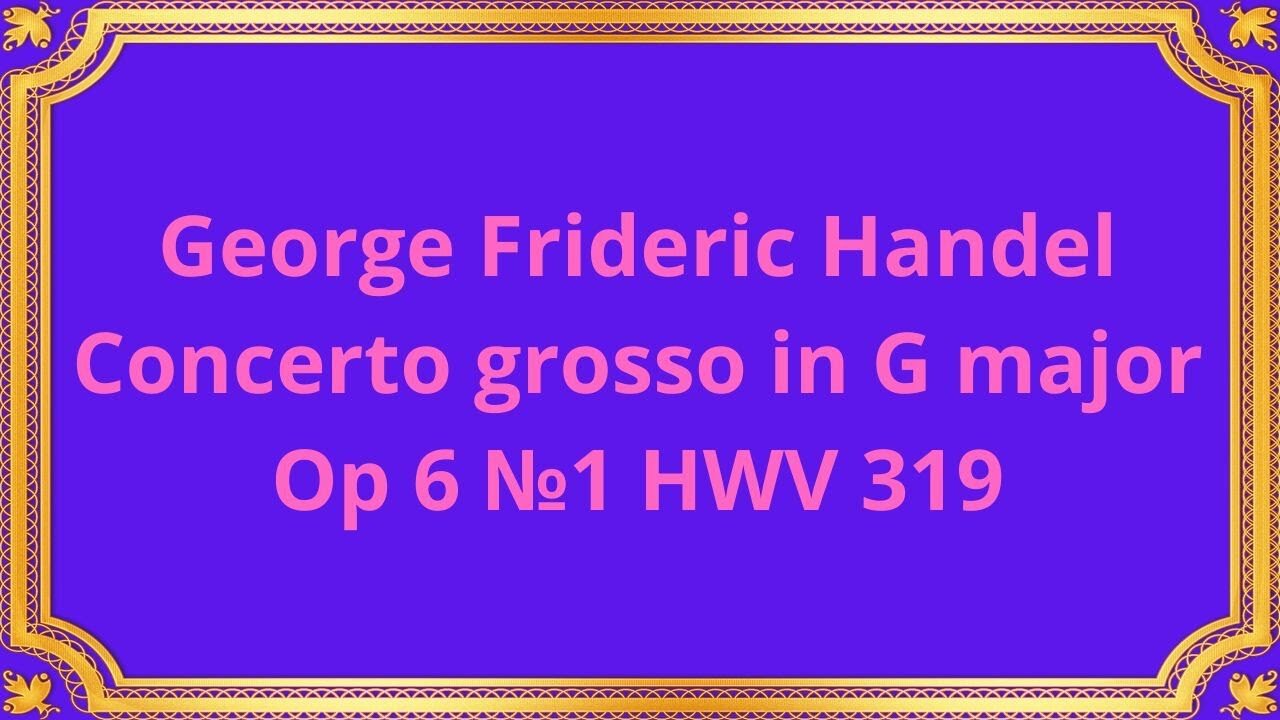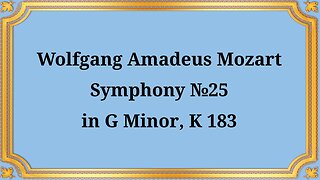Premium Only Content

George Frideric Handel Concerto grosso in G major Op 6 №1 HWV 319
#Handel #ConcertoGrosso #ClassicalMusic #MusicalComposition #Gmajor #Op6No1 #HWV319 #BaroqueMusic #Composer #Orchestra
Publication date 1939
Hermann Diener (violin/director) and his Collegium musicum
Personnel unknown (violin I concerto almost certainly Hermann Diener; violin II concerto probably Charlotte Hampe)
George Frideric Handel, a renowned composer of the Baroque era, left an indelible mark on the world of classical music. Among his remarkable compositions, the Concerto Grosso in G Major Op. 6 No. 1 HWV 319 stands out as a true masterpiece.
Concerto Grosso, a popular genre in the Baroque period, features a dialogue between a small group of soloists (concertino) and the larger ensemble (ripieno). Handel's Concerto Grosso in G Major exemplifies this genre, showcasing his genius in utilizing contrasting musical textures and highlighting the interplay between the soloists and the orchestra.
Handel composed the Concerto Grosso in G Major Op. 6 No. 1 HWV 319 around 1739-1740. The work consists of five movements, adhering to the traditional structure of the Baroque concerto:
1. A lively and majestic Overture
2. A graceful Allegro section
3. A haunting Largo movement
4. A spirited Allegro movement
5. A joyful and vibrant Allegro section to conclude the concerto.
Handel skillfully interweaves the concertino group (featuring two violins and a cello) with the ripieno orchestra, creating a delightful contrast between the soloists and the larger ensemble.
The concerto brims with memorable and captivating melodies, showcasing Handel's ability to create music that is both engaging and emotionally evocative.
Handel's use of harmony is exemplary, incorporating unexpected shifts and progressions that add depth and complexity to the composition.
The concerto encompasses a wide range of dynamics, from delicate and tender moments to powerful and energetic passages, creating a compelling musical journey for the listener.
Handel's Concerto Grosso in G Major Op. 6 No. 1 HWV 319 holds significant importance within the realm of classical music. It exemplifies Handel's mastery of the Baroque concerto form and showcases his ability to blend virtuosic solo passages with orchestral brilliance. The work has stood the test of time, captivating audiences for centuries and inspiring countless musicians and composers.
Conclusion:
George Frideric Handel's Concerto Grosso in G Major Op. 6 No. 1 HWV 319 is a remarkable musical composition that exemplifies the genius of the Baroque era. Its elegant melodies, harmonic richness, and dynamic variations make it a true masterpiece, showcasing Handel's skill as a composer. This concerto continues to captivate audiences and serves as a testament to Handel's enduring legacy in the world of classical music.
You have the opportunity to support the channel:
https://destream.net/live/RadSiarAl/donate
https://www.buymeacoffee.com/6355radsiaral
-
 16:53
16:53
Classical music_Music Inspiration
22 days agoWolfgang Amadeus Mozart Symphony No. 25 in G minor, K. 183
391 -
 1:45:07
1:45:07
Dear America
3 hours agoAndrew Bailey is now Bongino’s CO-DEPUTY DIRECTOR of the FBI!! Is Bongino On His Way Out??
75.9K58 -

Matt Kohrs
11 hours agoMore Pain Incoming?! || LIVE! Trading Futures & Options
15.1K2 -
 26:53
26:53
Law&Crime
17 hours ago $0.08 earnedTikTok Teen Sarah Grace Patrick Sobs in Dramatic Court Meltdown
1383 -
 LIVE
LIVE
GritsGG
2 hours agoWin Streaking! Most Wins 3390+ 🧠
113 watching -
 LIVE
LIVE
Wendy Bell Radio
6 hours agoDemocrats Need Fake Data To Cover Up Their Incompetence
7,121 watching -
 4:04:43
4:04:43
The Bubba Army
1 day agoImmigrant Truck Driver.. Who's To Blame?! - Bubba the Love Sponge® Show | 8/20/25
137K9 -
 LIVE
LIVE
JuicyJohns
2 hours ago $0.55 earned🟢#1 REBIRTH PLAYER 10.2+ KD🟢
97 watching -
 32:50
32:50
Uncommon Sense In Current Times
20 hours ago $1.31 earnedIs War Ever Just? Frank Turek Explains Just War Theory & Christian Ethics
27.6K6 -
 25:57
25:57
DeVory Darkins
1 day ago $21.47 earnedNewsom suffers HUMILIATING SETBACK after FATAL Accident as Trump leads HISTORIC meeting
62.8K152